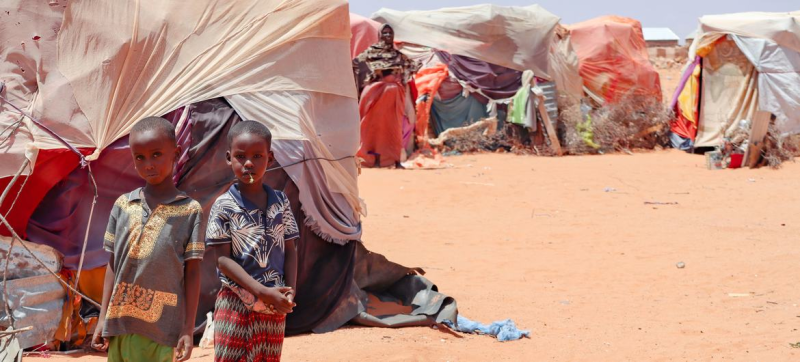- Body of Osman Hadi Returns to Dhaka From Singapore Late |
- Fakhrul condemns attacks on media, calls for unity, justice |
- 2 cops among 4 hurt in clash outside Indian Assit H.C. in Ctg |
- Inqilab Moncho urges people to avoid violence |
- Hadi’s death: Prothom Alo, Daily Star offices set afire |
WFP Warns Most Somalis Will Miss Life-Saving Aid in November

Children at an IDP camp in Somalia.
The UN World Food Programme (WFP) warned on Friday that millions in Somalia face worsening hunger and malnutrition as critical funding shortfalls force the agency to cut back on life-saving emergency food assistance.
“We are seeing a dangerous rise in emergency levels of hunger, and our ability to respond is shrinking by the day,” said Ross Smith, WFP Director of Emergencies.
“Without urgent funding, families already pushed to the edge will be left with nothing at a time when they need it most.”
A striking 4.4 million Somalis are facing crisis-level food insecurity or worse, according to the latest internationally backed IPC index, a global standard for measuring hunger and malnutrition. Millions must resort to extreme measures, such as selling essential livelihood assets, to meet basic caloric needs.
The hunger crisis is unfolding in a fragile and fast-moving context, where even small shocks can have devastating consequences for families and communities.
This year, the compounded effects of severe drought, conflict, and reduced humanitarian assistance have rapidly pushed the most vulnerable into emergency levels of food insecurity.
Somalia is also experiencing a rise in displacement due to droughts. Communities already struggling with water scarcity and hunger have lost much of their livestock, according to the UN humanitarian affairs office (OCHA) in Somalia. In the northern and eastern regions, fewer than 30 per cent of the population has access to safe water.
Due to funding cuts, the number of people receiving emergency assistance from WFP will drop from 1.1 million in August to just 350,000 next month—meaning less than 1 in 10 people will have access to essential food aid.
Malnutrition is already alarmingly high, with 1.8 million children under five malnourished. WFP’s nutrition programs are also being reduced, with only 180,000 children still receiving treatment.
The agency leads the largest humanitarian operation in Somalia, supporting over 90 per cent of the country’s food security response. It requires $98 million to sustain operations for 800,000 people through the lean season, when food is less available, until March next year.
“The current level of response is far below what is required to meet the growing needs,” warned Mr. Smith.

